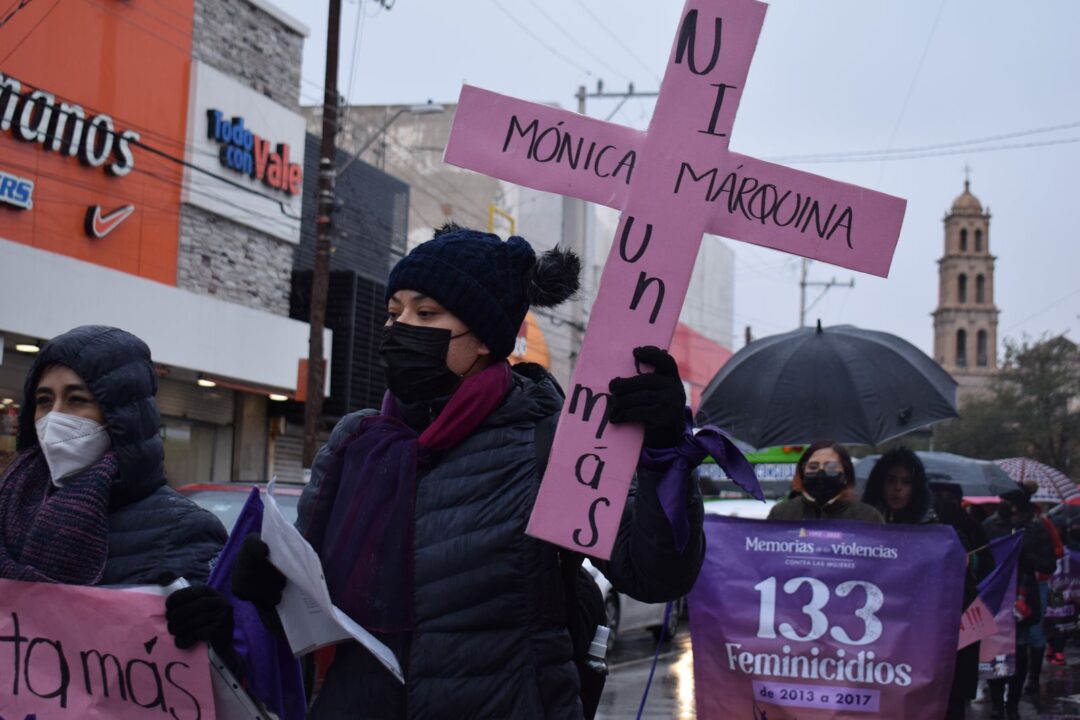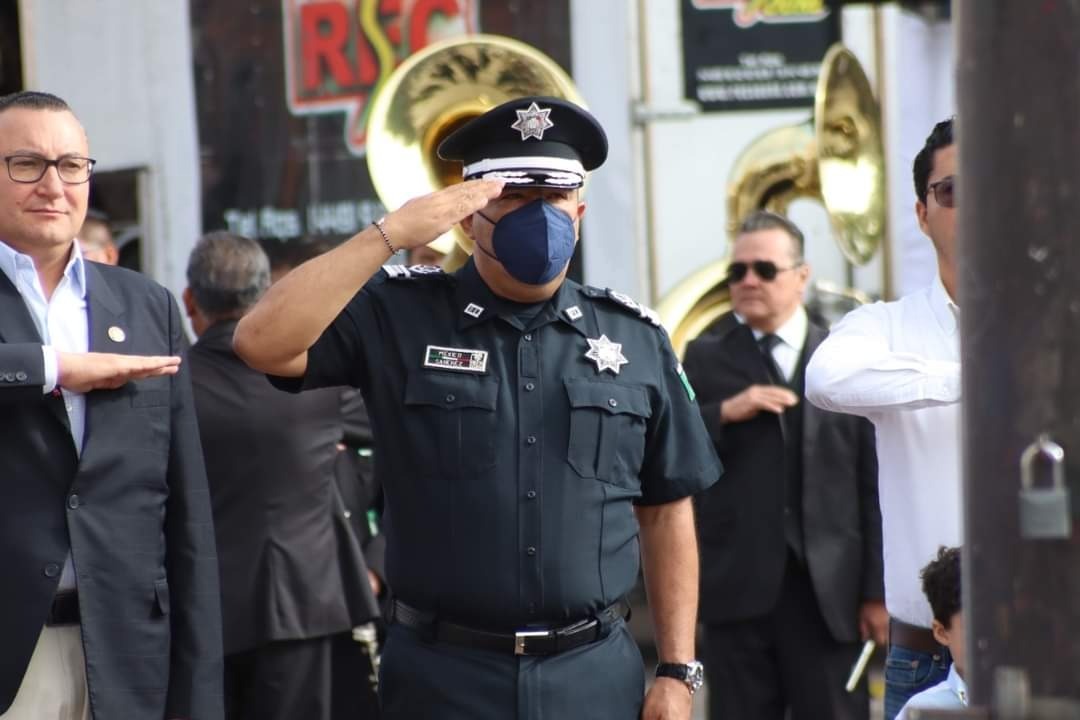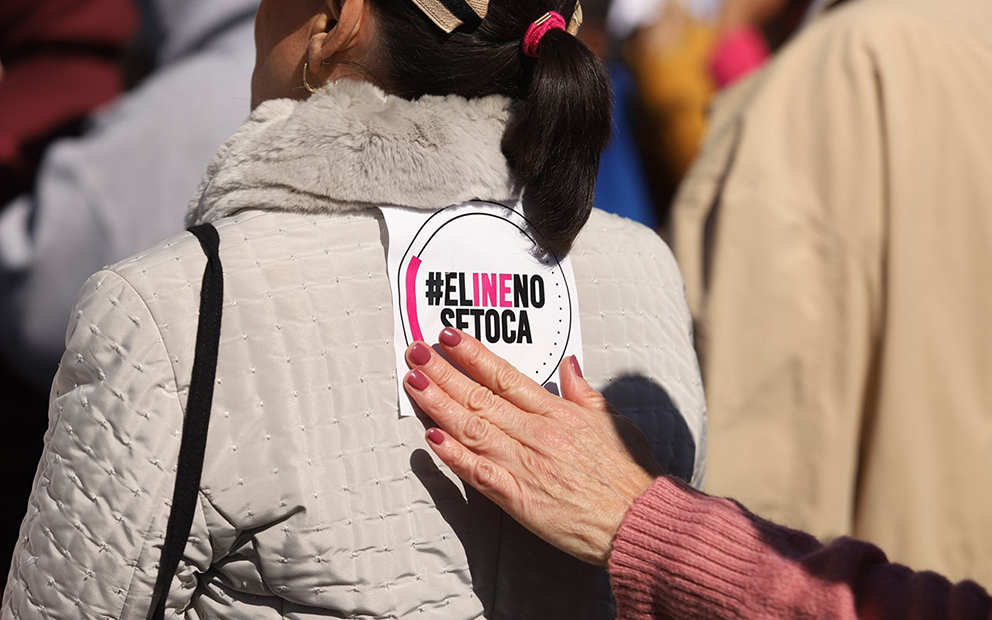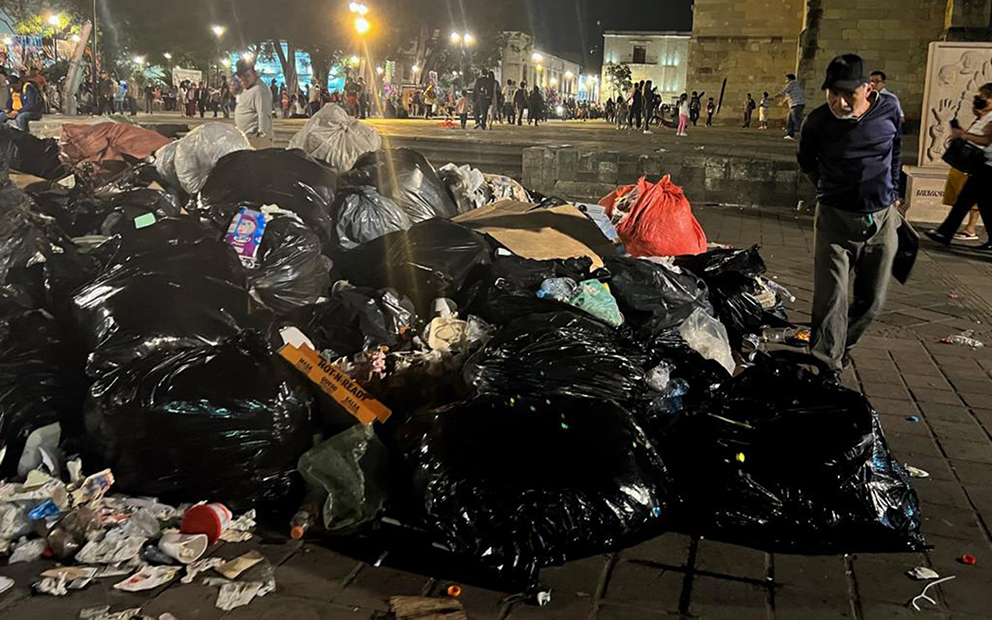Don Camilo: The barefoot historian with a treasured archive
29 mayo, 2021
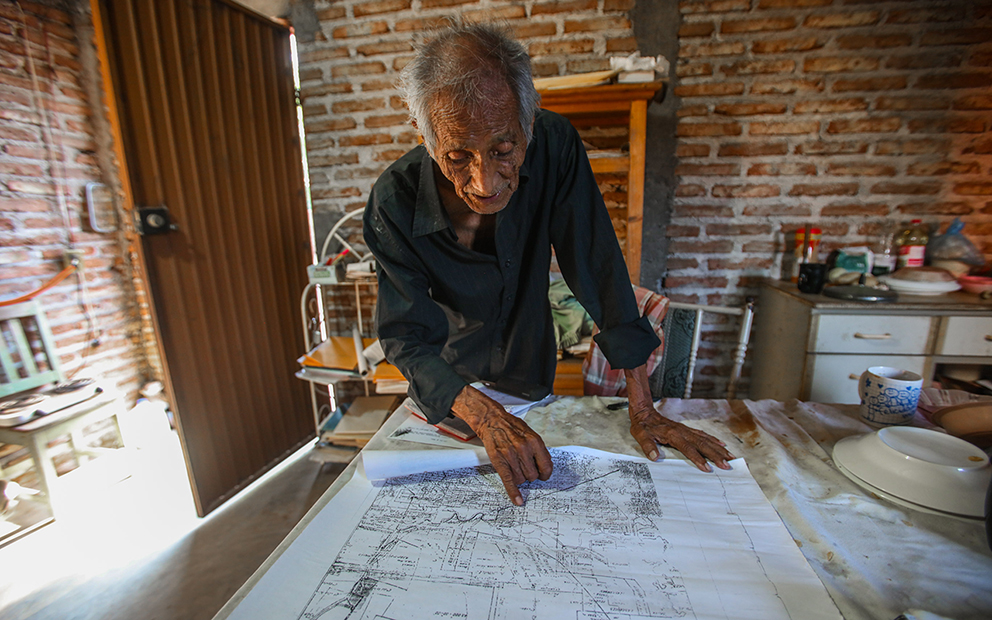
Drugs, drought, and poverty have taken a toll on the Yaquis of Sonora. Now, the federal government is trying to come up with a plan for justice. But over 100 years after the Yaqui War, it’s not easy. The archives of Don Camilo provide clues about what should be done
Story and Photos by Daliri Oropeza.
Translation by Maya Averbuch.
POTÁM, SONORA – The map that rolls open on the table is huge. At least it looks that way in the narrow brick room where Camilo Flores Jiménez speaks of the genocide of his family and the Yaqui Nation. He usually goes barefoot, but before he ushers in any visitors, he puts on a pair of creased, coffee-colored boots.
The map is from the vast archive of Don Camilo, as people call him out of affection and respect. On it, a grid cuts through the snaking outline of the Yaqui River and the sacred mountains in the northern Mexican state of Sonora. He keeps this map and other documents on bookshelves and in a filing cabinet that occupy more than half the house.
His veiny hands point out on the map where the Mexican army kidnapped his grandmother and her newborn baby from their home in Cócorit, and put her on a train that would take her and hundreds of other Yaquis to the state of Yucatán, in southeast Mexico. Don Camilo and his archive are a sign of who, and what, survived that period.
“My grandfather was working in the field, and so they didn’t get him. But they took my grandmother, because there was an order to round everyone up. When my father, Salomón Flores Vásquez, was growing up, he understood that they were all enslaved in southeast Mexico. He saw how the Yaqui slaves and slaves from other Indigenous groups were treated,” he says, seeming to gaze towards a fair future that is as unreachable as the horizon.
“They took her because it was a raid, and they knew she and other people were Yaqui because of how they were dressed. At that time, there were more Yaquis than Yoris [light-skinned outsiders], and people knew who was who. The government grabbed hard-working people and called them rebels. That’s what they blamed them for,” he says, sipping on a cup of coffee.
Many drowned in swamps or were mauled by crocodiles, he says, while they worked as slaves on henequen agave plantations. Most never got a gravestone, let alone a spot in a cemetery. The military, he explains, accused the Yaquis of secretly supporting rebels in the Sonora mountains. But Don Camilo insists that was never the case: the Yaquis were merely rebelling against the infrastructure projects of then-President Porfirio Díaz, especially a train line on their land.
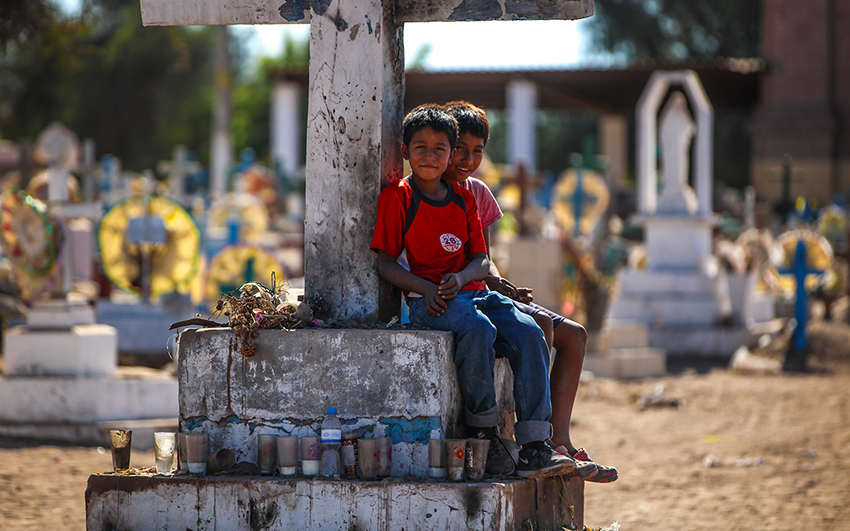
Thousands of Indigenous people died in the Yaqui War, which the government carried out in many different parts of Sonora. The anthropologist and ethnohistorian Raquel Padilla Ramos—who was murdered in 2019—says the cause of the armed conflict was the Yaquis’ rejection of modernization projects. Though the war started in 1824, it reached its peak during Díaz’s rule, during a period Mexican historians call the Porfiriato.
For over 112 years of war, the Yaquis defended their territory. The military not only deported people, but also bombed them from planes. Oral histories include the stories of Yaqui fighters who holed up with weapons in the sacred mountain. The Mexican army hunted them down, and the places where they and other members of the tribe died are still venerated.
There was no peace until 1937, under the government of President Lázaro Cárdenas. His vision of reparations has, in recent years, become central to the plan of President Andrés Manuel López Obrador, who has said the Yaqui people should get what they are owed. Since his administration announced a justice commission last year, the person in charge of the negotiations has been National Institute for Indigenous People (INPI) Director Adelfo Regino Montes.
The eight Yaqui towns
Don Camilo is known as a Yaqui historian, though he considers himself more of a writer. His dedication to recording, storing, and organizing documents, stories, routes, meetings, and maps, and then teaching people about their significance, is well known by the residents of the eight Yaqui towns. He has also written three volumes about the Yaquis’ territory.
He lives in a town called Vícam Estación, on a plot of land with two rooms, one of which he plans to give to his son, so that the younger man and his wife can stop paying rent. Don Camilo thinks justice must include Yaqui youth learning their people’s values, the same ones that he learned, but which today are threatened by urbanization, discrimination, and the war’s legacy.
He remembers that when he and his family were living in exile, his mother and his grandmother told him about the expanse of land and the peacefulness along the Yaqui River. But when he finally had the chance to return to where they’d left, he found a culture that was disappearing, a community that kept being displaced, and a river that was running dry.
“We thought if we came back, we’d have tons of corn,” he said. But that was not the case.
The Yaqui people used to live all along the river, from the Sierra de Bakatete mountains to the Bahía de Lobos coast, from the Yaqui Valley to Sonora in northern Mexico and Arizona in the United States. However, with the arrival of Jesuit missionaries in 1617, the belief that there were only eight Yaqui towns became common.
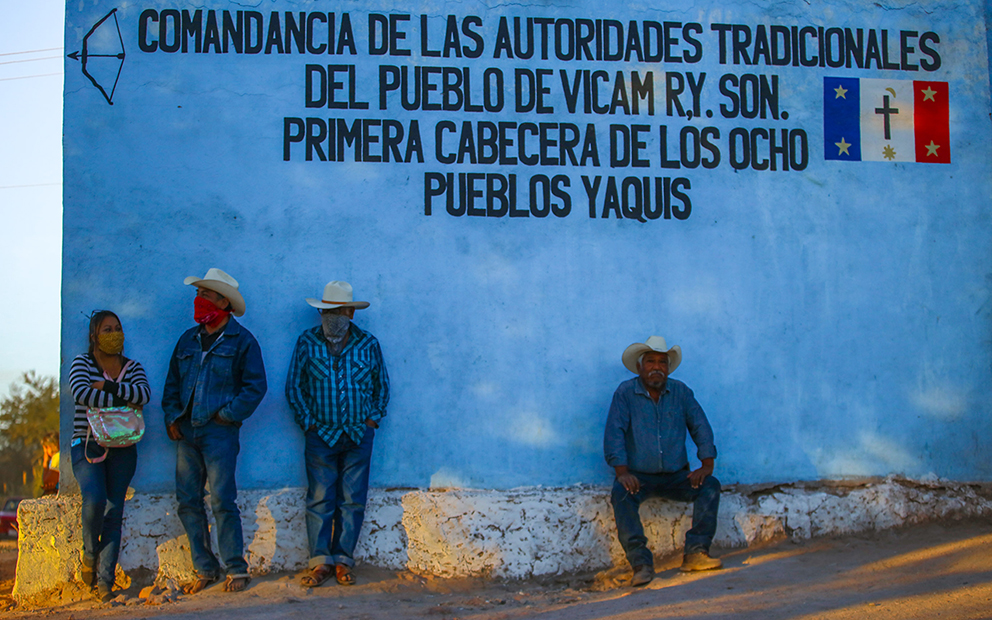
Padilla Ramos, the ethnohistorian, explains that the eight towns were not actually separate entities, but the formal divisions started to be used after the Jesuits came to preach. It’s possible that there were many more, since the settlements all along the Yaqui River were never counted.
“The Spanish town layout, with the temple (ceremonial building) and the seat of civil power at the center and home-habitations on grid patterns (in square blocks) around them did not work at all for the Yaqui communities,” she writes in the book Eight Towns As Concept.
Nowadays, the eight towns are both religious and political centers. They were called Loma de Guamuchil, Loma de Bácum, Tórim, Vícam, Pótam, Ráhum, Huírivis, and Pitahaya. Their land is not evenly divided, and some residents live mainly from the land, others from the sea. People blame the Yoris, as they call light-skinned outsiders, for continuing to displace them.
Since 1984, Yaqui authorities have sent commissions to survey the tribe’s territory. The outlook is not positive. If displacement continues, the group is at risk of disappearing. Their current battle is against the construction of mines and gas pipelines on parts of their land.
For Don Camilo, the loss of land is the explanation for the loss of tradition.

The eight towns are divided between three municipalities, and the majority of residents go to nearby Obregón City if they have to do business. Earlier in the pandemic, they headed to the city when there were no more hospitals, medical staff, or treatments available on their land.
The Yoris’ destruction of the territory have forced resident to redesign their central towns: Loma de Bácum turned into Bácum and Loma de Guamuchil into Cócorit. There are now two Vícams, Pueblo and Estación, though the latter is also called Switch because of its train lines.
Padilla Ramos points out that the Yaqui Valley was abandoned because so many people were deported. When they returned, the limits of their land had to be redrawn.
In Don Camilo’s third volume, he discusses the displacement caused by transnational companies, like the Richardson Construction Company, and the occupation of the Yaqui Valley by businesses looking for fertile land. Over time, the Yaqui territory has continued to shrink.
Independent system of government
Streets made of dirt and dust cut between mesquite trees and straw fences. It’s possible to see the gardens and the shade-giving roofs of residents who keep their animals outdoors. Traditional homes here are still made out of straw and adobe. Only in the two towns that are most urbanized, Vícam and Pótam, are cement buildings and paved roads commonplace.
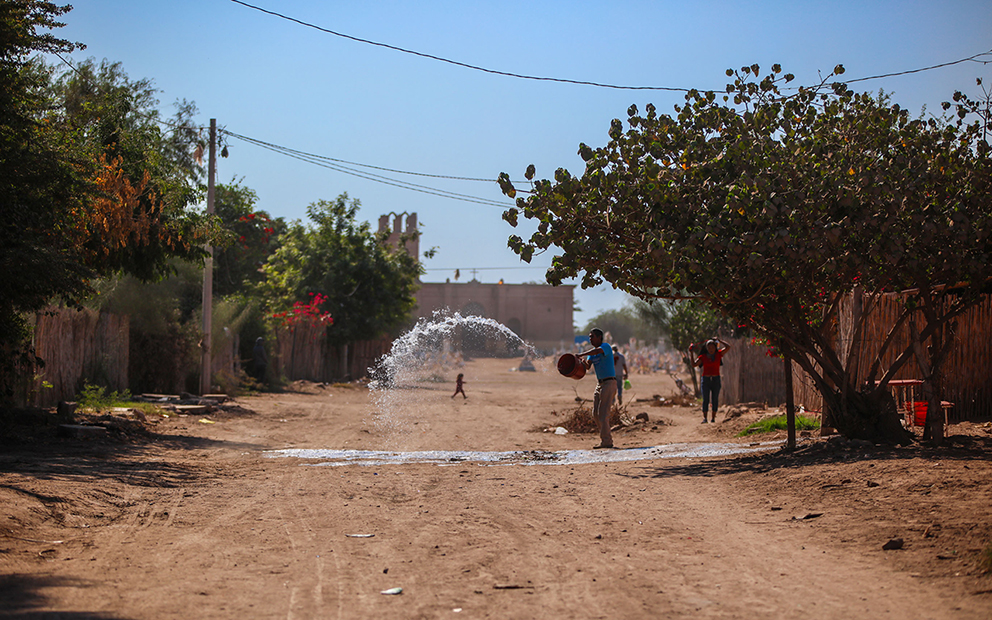
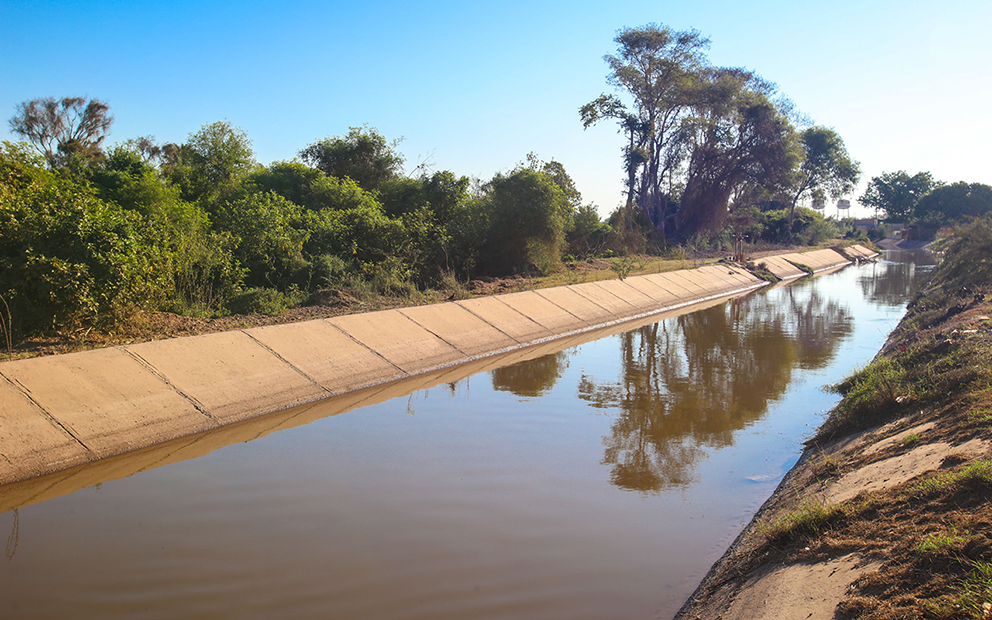
In Potám, like in the other towns, the historic churches that the Jesuits made stand alongside the palm shelters of the Yaqui’s Traditional Guard. Meetings and assemblies take place here; this is where decisions are made. Given the structure of these communities, the leaders take into account both religion and politics, and the will of their troops, the Yaqui people.
The Traditional Guard creates order and justice. It consists of a governor, an elder advisor, a captain, a commander, and a secretary, who govern by assembly in every town. They have their own system of justice, separate from that of the Mexican government, and every Sunday they report back to their so-called troops.
The Yaqui church, on the other hand, is focused on maintaining rituals, and preserving the spiritual and sacred. Its leaders determine who is in charge of celebrations such as the Cuarejma ceremony, and they decide who can be governor, and organize the ceremonies and dances. The churches do not have benches. They are dark inside, but decorated with bright colors. They have giant statues of virgins and saints, and a platform at the back for a choir.
In the Temple of the Holy Trinity, a sound interrupts the silence between the turquoise walls. It’s the voice of Clementina, who over the past ten years became known first as a singer and then as a cantor in the Yaqui church. The church where she met her husband, who is the spiritual leader, known as the Temasti-Mol in the Yaqui’s language, Jiak Noki.
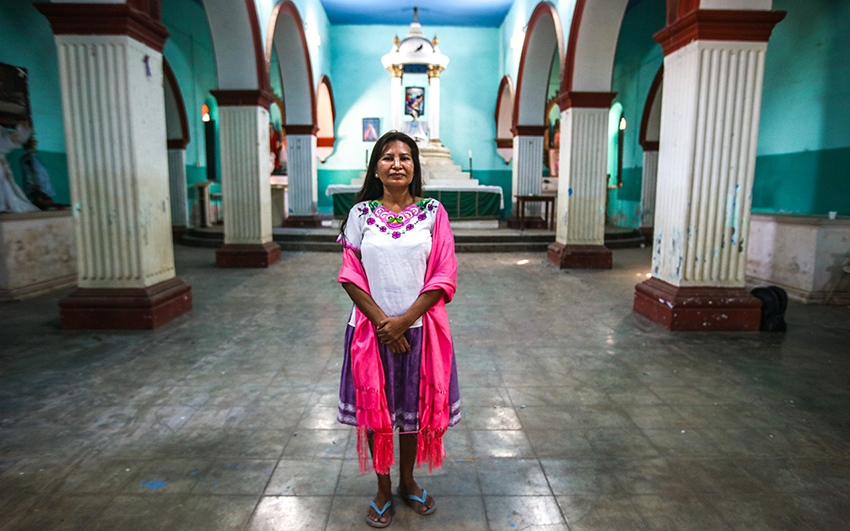
In the Yaqui tradition, it is the church that determines who will be in the Traditional Guard.
“I would like to see them hand over the land to the people who have been working on it. All the owners should do that so people don’t have to rent. These lands are our inheritance, what our parents left us, and we’ve worked on them with our hands and feet,” she says, her voice reverberating in the church.
In 2020, Potám’s Governor, José Ángel Maldonado Buitimea, gave an interview to Pie de Página.
Maldonado Buitimea is a descendent of the legendary Yaqui fighter Tetabiate Maldonado, whose grave he visits in the Bakatete mountains, where many ancestral rituals take place, including the dance of the deer. There used to be hide-outs of Yaqui fighters there.
Maldonado spoke with the director of the National Institute for Indigenous People when discussions around the Justice Plan first started.
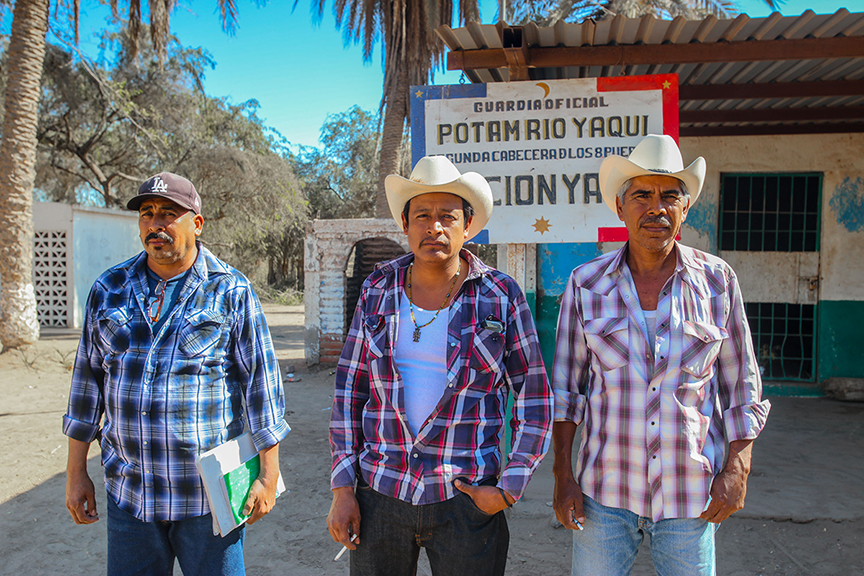
“Adelfo [Regino Montes] told us that he wanted to do things the legal way. But we’ve had weapons before, and we have them now. We’ll give him one year to do everything [organize the territory and the Justice Plan]. And if not, we’ll get our weapons. He told us that he had faith in us.”
A legacy of water theft
In September 1940, President Cárdenas decreed that there would be land restitution for the Yaqui. Not only did he assure them that they would be given what was stolen by businesses, but also access to half the Yaqui River water that was stored in the Angostura reservoir each year.
That never happened.
Don Camilo describes it in his second volume: “They never carried out what was announced by President and General Lázaro Cárdenas, which consisted of redefining and redrawing the boundaries of the land, as ordered in the 1940 decree.”
Oral history suggests the Yaqui started to call people that helped Cárdenas Toroko Yoris, allies of the government; in contrast to those who they deemed Kaujomes, Yaqui loyalists who were connected to their traditions. The Yaqui church lost its importance, according to Clementina, because the governors of the Traditional Guard were tasked with speaking for the people.
The Yaqui River is one of the largest rivers in Sonora, second only to the Mayo River. Its basin stretches from the south of Arizona to the west of Chihuahua state.
“The implementation of a system of dams in what is called the Yaqui River has gradually caused the displacement (as well as disruption and the debilitation) of a culture centered around water. In an already semi-desert geography, aridity has been made more extreme by what is called the ‘Independence Aqueduct,’” wrote Padilla Ramos in her anthropological study of the social and cultural impacts of the aqueduct.
In addition to the Angostura, there are two other dams, El Novillo and Oviáchic. Since 1996, the reservoirs produced by those dams have consistently lacked water.
In his book Lázaro Cárdenas y la Revolución Mexicana, journalist and historian Fernando Benítez describes how when Cárdenas visited the area in the 1960s at the request of the eight governors of the Yaqui towns, he wept after learning that the lands had been (and continue to be) controlled by the descendents of Alvaro Obregón, Plutarco Elías Calles, and other Sonoran generals and politicians. That was when he found out that the Yaqui people had never received their half of the water from the reservoirs.
“According to Lázaro Cárdenas’s presidential decree, half of it should be ours, but if you look at any river or any crop, you’ll see that’s not the case,” says Domitila, a teacher who has spent over twenty years teaching Yaqui children and teenagers traditions, language, and customs at the Potám Cultural Center.
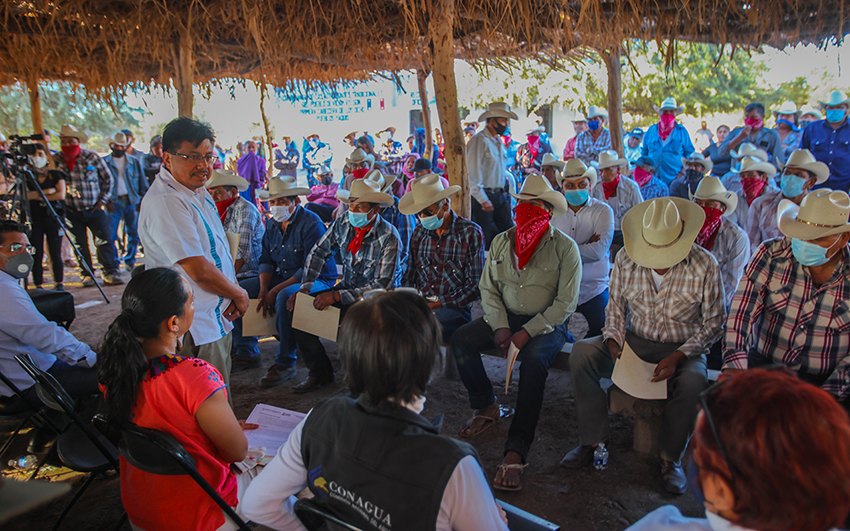
The land, according to Clementina, used to be a source of income for the tribe, but now little money goes toward supporting the traditional church. People rented communal land to businessmen in the Yaqui Valley, and at first they made a profit. But the ongoing practice of renting has been harmful in the long run. Previous governors asked for rent in advance, which meant that there was no income later, and even less money for religious celebrations and rituals.
People ended up working more, and with the hours left in the day, fewer of them prayed.
“With the water injustice that the Yaqui Tribe has already faced, it is highly probable that any new water redirected from the Yaqui River basin to projects like the Independence Aqueduct will have irreversible effects on the land, the culture, and the social structure of these people, putting their future and their autonomous development at risk,” according to Padilla Ramos’s study.
Even with these kinds of warnings, the inauguration of the Independence Aqueduct took place in 2013, sending the water of the basin to the city of Hermosillo.
The Yaqui say now there is no water in their river. It is almost dry.
Diverting a source of life
“The Yaqui River is a crucial and fundamental part of the Yaquis’ lives. It’s the origin of the people, and it gave life to the Yaqui community… I’m not sure how Pitahaya is still standing if there’s always a lack of water,” says Domi, as people call her in town. She explains that the cosmovision of her people is based on el batwe ania, or the world of water; el juya ania, or the world of the mountain; el sewa ania, the world of flowers; and chokim ania, the world of stars (the sky).
But she says Yaqui youth have started to reject their own culture. They’re short on resources and tired of discrimination, and drug addiction has started to make some of them even more distant.

Domitila thinks the young people’s disconnect from their traditions has to do with the manner in which the Yaqui church lost its traditional place in the community.
“We used to be able to sleep outside on our land, but now people are afraid, because of how the youth are behaving,” she says. Don Camilo, for example, does not have a fence around his house, but someone stole his front door and his cellphone, leaving only the charger.
Crime has increased. In January 2021, the Cajeme municipality had 54 homicides. In January 2020, it had only 28. From December 2018 to December 2020, there were 755 killings, turning the municipality into one of the fifteen most violent in the country, according to the National Executive Office of Public Security.
In the house of the former governor of Potám, José Ángel Maldonado Buitimea, the chickens walk freely. There is construction going on, and in the distance, a house is visible. Maldonado Buitimea is sitting in the shade of a tree, in front of a stationary truck with the logo of the INPI, next to a relative, José Ángel Valenzuela, after having come back from a visit to his ancestor’s grave.
“Justice would mean giving everything back, everything that they took years ago. They get a lot of money out of the use of our lands. They’ve taken the water from us, and refused to give it back, even though we’ve negotiated with CONAGUA [the water authority]. They should give all of it back. Since they’ve been taking our land for so many years, they should have a registry. You can see how many mines there are, and how the mining business makes water even more expensive. The money? We’re not even fighting for the money,” says Maldonado Buitimea.
Though the leaders of Pótam are participating in the negotiations, Clementina is against how they have been carried out. “Over here, in the church, none of us know about their Justice Plan. We don’t know what’s in it. What does it say? What did they include, and what did they leave out? We really don’t know. I’m sure that none of the church members in the eight towns know. The only people who know are the governors. They’ve never sat down with any of us to talk about these issues.”
She questions their strategy. “With their famous Plan, are they going to address the root problems, or are they going to just prop up the trees? The pandemic has meant not a lot of people are allowed to go to the meetings between the federal officials and the Yaqui governments. But our traditional governance is based on the people, and even those of us who do not hold political office should count. We are the wings of the government, but only the officials get to go, and they don’t include the rest of us, so we don’t know what’s going on,” she says.
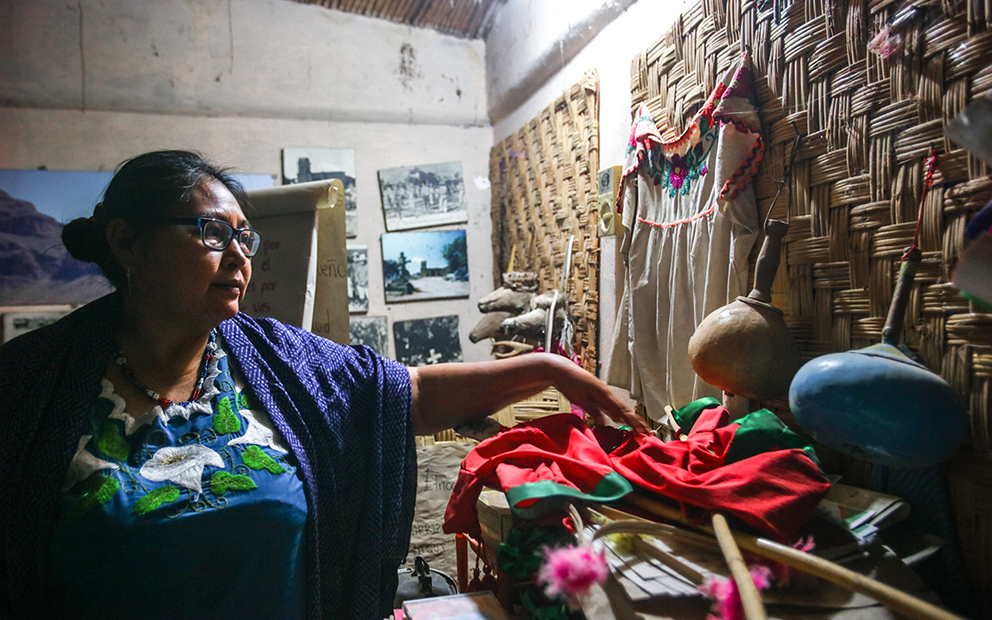
The meetings have been attended by seven of the eight governors from Yaqui towns: Loma de Guamúchil, Tórim, Vicam, Pótam, Ráhum, Huirivis, and Belem. One of the negotiators, from Loma de Bácum, belongs to a dual government, which means that he is not a traditionally selected authority, but one selected by other means.
In order to make decisions, the eight governors selected by the Yaqui people and officially named by its church are all supposed to agree.
Loma de Bácum has so far managed to stop a gas pipeline and defend its sacred lands against mining. Its Traditional Guard has not attended the meetings, says Guadalupe Flores Maldonado, who is responsible for overseeing many of the town’s ecological agriculture programs.
“We asked Adelfo: what is justice? Justice does not have anything to do with legality. Most of the time, what is just is illegal and what is legal is unjust. For me, justice would be when you follow my laws, because you are on my land, and you respect my traditions and rules. We should be having a conversation between equals. But forcing me to follow your rules, which are the norm for your social programs, that’s not right. That’s just making people obey. You want to do things your way, because you are the state, even though my methods have proven to be better than yours. Justice occurs when we are all equal,” says Flores Maldonado, standing in front of fig trees that are just starting to emerge from the ground.
For Don Camilo, justice would mean ensuring that the Yaqui values continue to exist, that the youth respect them, that they once again become part of people’s lives, and above all, their actions. The Mexican government should not only mention the Yaqui cosmovision, he says, but adapt to it.
Ayúdanos a sostener un periodismo ético y responsable, que sirva para construir mejores sociedades. Patrocina una historia y forma parte de nuestra comunidad.
Dona

